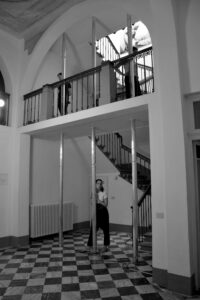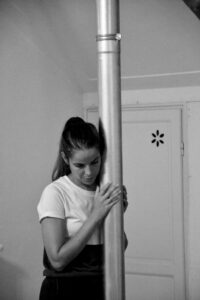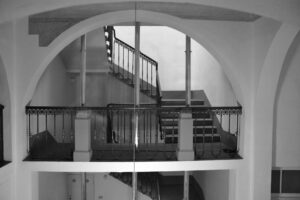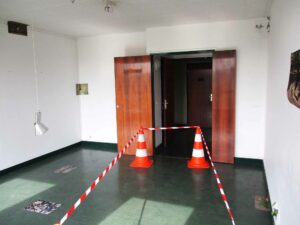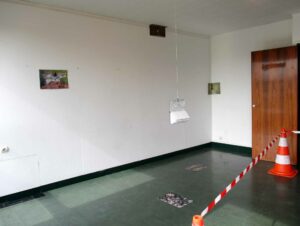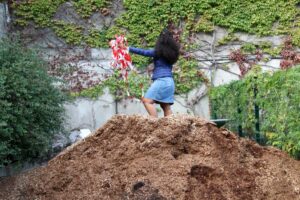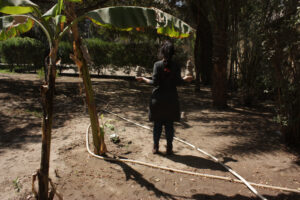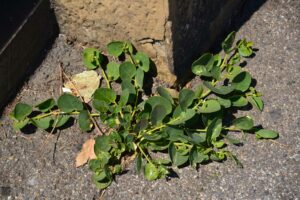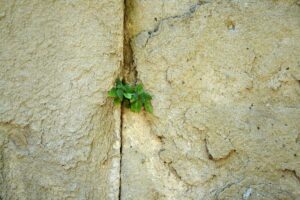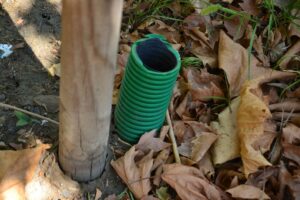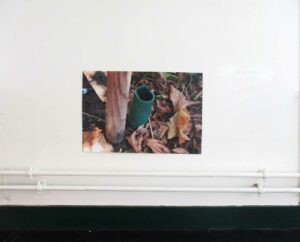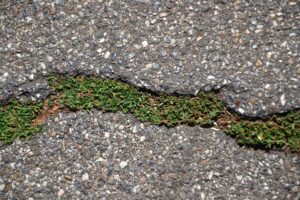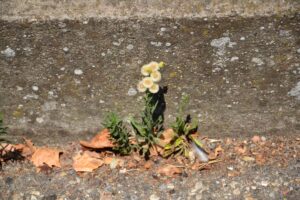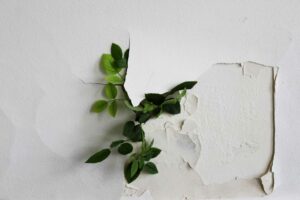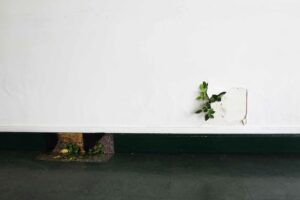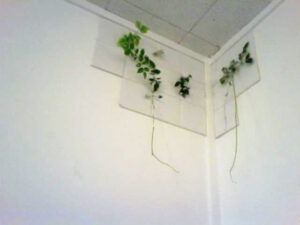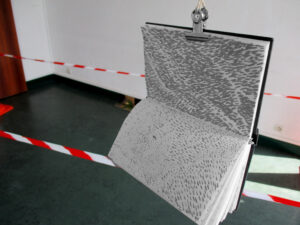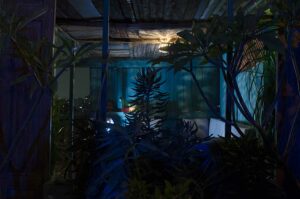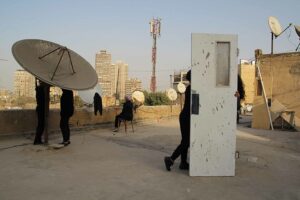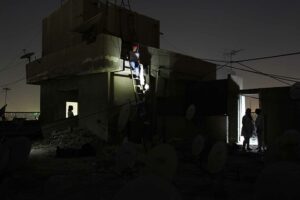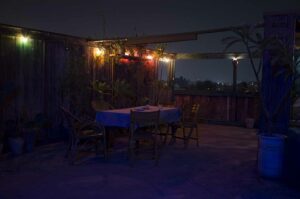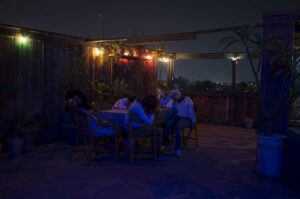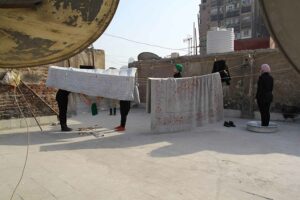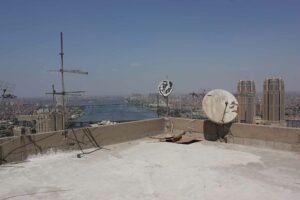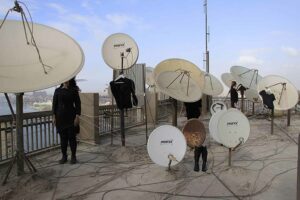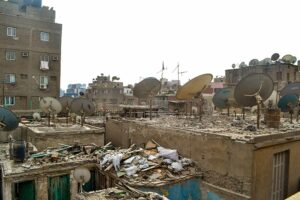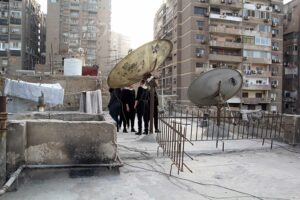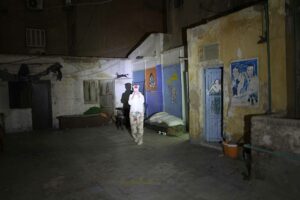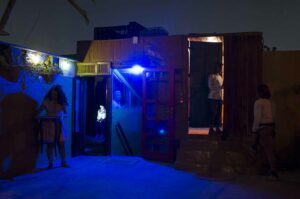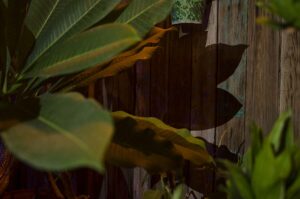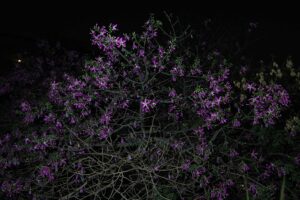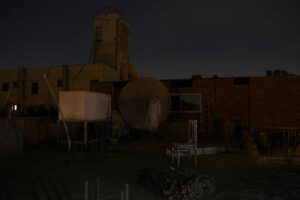Hagar Masoud lives and works in Cairo. Her practice is research-based and multi-disciplinary including sound art, performance, video and site-specific installation. She holds a bachelor degree in Art from Helwan University, Cairo. Masoud is passionate about exploring, researching, and recording ephemeral sounds of urban cities, and building a sound archive. While observing social, cultural and economic conditions through walking. Sound helps to preserve the cultural identity of cities and public space as well as the transformation of societies
through time. Masoud’s practice investigates walking as a significant aspect of art practice and as a specific method of research into perception and experience. Her work also researches the reciprocal relation between individuals and public space within its cultural and historical evolution. Oral history provides alternatives to listen to the voice of space, in addition to a new approach to discovering its unique and different character.
Masoud’s work has been presented in numerous music festivals and venues across Europe, North Africa and the Middle East. Including Sic! Raum für Kunst, Switzerland (2018) Biennale Africaine de la photographie (Bamako), National Museum of Mali (2017) Villa Romana, Italy (2016), Cité Internationale des Arts, Paris (2016), Künstlerforum Bonn, Germany. She is also a member of (Cairo Bats)
https://soundcloud.com/hagar-masoud
Cairo Bats is a Female Artist Collective Based in Cairo, staging photographs through playful interactions in urban public spaces.
http://cairobats.wixsite.com/cairobats
Dying and Vanishing
Sound performance
Audio archive between 2010 and 2016, along with experimental instrumental recordings, 14’09”
2016
Sound performance in public space within a bamboo forest, among the surrounding soundscape including sounds of insects, birds and traffic as a parallel continuously unfolding symphony composing a hybrid nature. The performance mixes between natural sounds and digital sounds composed out of field recordings from different environments and cities such as Cairo, Bonn and Morocco.
Untitled II
Site-specific sound installation
Aluminum pipes, 6 x 3.12 m, Six soundtracks, Villa Romana, Florence
2016
Untitled II is a site-specific sound installation work based on research of transmitting sound within solid materials. Using metal such as aluminum as the best material for carrying sound waves, relies on the speed of sound theory.
The soundtracks installed inside the pipes are field-recordings re-composed in multiple layers from various environments. These recordings have been collected from a range of geographically linked cities such as Bonn, Paris, Florence, Cairo and Alexandria between 2010 and 2016 – and as such translate movement, migration and our associations with these multiple and complex sites.
Six metal pipes are integrated into the architecture within the gallery – creating new contexts, environmental and functional (for the object). Besides questioning confusion is it part of the building renovations or is it an artwork?
To listen, one has to place their ear on each pipe. Through engaging the audience in a phenomenal listening experience and allowing a direct interaction with the artwork.
Core of being - Challenge
Installation, performance
2016
The way we move within the world is a combination of our body and our mind. Our actions and our thoughts define the place we are in those around us. There is another language that has not yet been identified in our movements. These two together strike a resonance with our ways of understanding and seeing.
Walking is a significant aspect of art practice and is a specific method of research into perception and experience. Walking as art practice becomes not just a pragmatic movement from A to B but allows us to examine the many untaken directions not just physically but mentally, socially, politically and geographically. For example, being cognizant of sight allows us to consider how a terrain may affect not only our movement but our reflections. To make us consider for example; how one walks, what conditions or protocols define the walk, how one sees the city through individual or group walks.
During my stay in Florence, I had a lot of daily walks in the city. Where I observed the wild plants growing in every corner in the city, whether in a stone wall, between street asphalt, or in between stairs. They imposed their presence in diversity, different forms, non-prepared environments and occupied locations. As a walker, you would notice them as green colonies. Their consistency shaped their uniqueness, strength and ability to challenge geographical and environmental boundaries. Thus, they became a visual identity of Florence.
After I headed to my studio at Cite International des Arts, I transformed my studio into occupied locations. In an attempt to create a conversation between wild-growing plants in the city and barriers, as a metaphor of human movement and restrictions. Besides a visual conversation between alive plants and printed plant images.
Through using traffic cones and traffic tape, prints of wild plants of Florence, in addition to re-produce natural wild plant – wall installation out of white wall tile, as a continuity of wild-growing plants in tough environments. Along with the movement illustration book inspired by body movement, pace, and energy. Illustrated after a daily walk for 22 days in Paris, after arrival from Florence. 2016, (H.M)
CAIRO BATS
Act 1: The Roof
Photography, exhibition
2016
CAIRO BATS is a female artist collective based in Cairo staging photographs through playful interactions in urban public spaces. The resulting images aim to destabilize ways of thinking about how female bodies perform in the city, inhabit specific environments, and interact with the constant manoeuvring in everyday spaces.
The Cairo Bats group has been working together for seven years and currently consists of the artists Mai Al Shazly, Nadia Mounier, Hagar Masoud, Omneia Naguib, Yvonne Buchheim, Magdalena Kallenberger and Mireille El Magrissy.
Act 1: The Roof is the first public exhibition of Cairo Bats’ work and assembles a series of pictures spanning a period of two years taken on roof tops in the city. These spaces navigate and defy limitations of the everyday environments women inhabit. In the images the members of the group act as the cast on this urban stage, equivalent to improvisational theatre. Their performative interventions evolve in response to architectural features and objects they find in the chosen place: buckets, rugs, satellite dishes, furniture and metal bars. Playful interactions among the individual group members are the basis of their working process whereby the camera is a witness to their performative interventions with all six group members constantly moving between, in front of and behind the camera. A particular emphasis is given to the positioning of clothes: a pair of boots, a black shirt, a white dress are used as stand-ins for absent members of the group.
The theme of exploring absence and presence in relation to given circumstances and settings continues throughout the series; however, at night different light sources join the cast and underline the play of what is visible and invisible.
The location of the roof at the margins of the domestic order of the house or the apartment, in between the private and the public, echoes in the groups recurring play with what can be seen and what is hidden from view, and their relation to topics inherent to working with cameras such as the picture frame, light and darkness or the camera position. Combining pictures taken in different locations, by day and by night, from the earliest working sessions to the most recent one Act 1: The Roof shares with the public what has so far been a working process within the collective.
